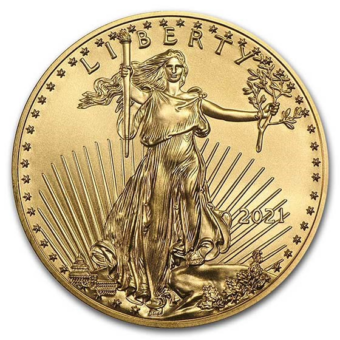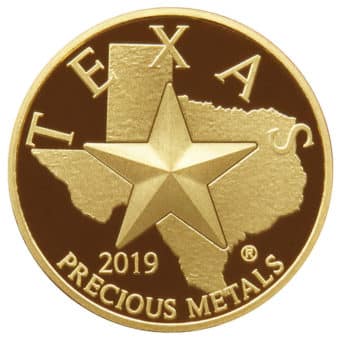A Daily Journey Through the Week's Market
Monday - 2.19.24: Gold prices reached a nearly one-week high on Monday, boosted by a slight retreat in the U.S. dollar and escalating Middle East tensions enhancing gold's appeal as a safe haven. U.S. gold futures increased by 0.4% to $2,031.30. The U.S. dollar's dip and heightened Middle East conflicts, particularly with Israel's ongoing military operations in Gaza and attacks on ships in the Bab al-Mandab Strait, supported gold's rise. The market anticipates a potential interest rate cut in June with a 74% likelihood. Meanwhile, other precious metals saw mixed movements, with platinum and palladium edging up, while silver fell by 1.2%.
Tuesday - 2.20.24: Gold prices saw notable gains in early U.S. trading Tuesday, helped by China lowering key mortgage rates to boost its housing sector and a weaker U.S. dollar, with April gold up $14.30 at $2,038.20. Meanwhile, silver prices dipped, with March silver down $0.32 at $23.155. Mixed reactions were observed in global stock markets, with anticipation for the Federal Reserve's upcoming FOMC meeting minutes, amid expectations of delayed interest rate cuts due to recent U.S. inflation trends.
Wednesday - 2.21.24: In early U.S. trading on Wednesday, gold and silver prices showed little change as the market awaited the Federal Reserve's last FOMC meeting minutes, with April gold slightly up by $0.90 at $2,040.70 and March silver marginally down by $0.011 at $23.125. This comes amidst speculation that recent U.S. inflation trends might delay any Fed interest rate cuts to the latter half of the year.
Thursday - 2.22.24: Gold and silver prices saw modest gains in early U.S. trading on Thursday, buoyed by a weaker U.S. dollar and stable Treasury yields, despite slightly hawkish FOMC minutes. April gold increased by $5.20 to $2,039.50, while March silver rose by $0.226 to $23.125. Globally, stock markets were mixed. U.S. financial markets also eyed various economic reports and Federal Reserve officials' speeches, amidst steady crude oil prices and a 4.307% yield on the 10-year U.S. Treasury note.
Friday- 2.23.24: gold and silver prices dipped, pressured by robust U.S. stock performance and a risk-on market sentiment, along with a slight uptick in the U.S. dollar index and positive global stock trends. Technical selling contributed to the metals' decline, with gold and silver showing bearish near-term technical postures. April gold dropped to $2,030.30, and March silver fell to $22.77, as rising U.S. Treasury yields and higher crude oil prices further influenced market dynamics.
Gold Maintains Stronghold Above $2,000 Despite Bitcoin ETF Surge
As Bitcoin ETFs gain traction, drawing over $4 million in inflows since approval, gold-backed ETFs experience substantial outflows, shedding over $3 billion since the year's commencement. However, analysts caution against drawing direct correlations, attributing gold's selloff to macroeconomic factors predating the Bitcoin ETFs' launch. Despite gold's nine consecutive months of ETF outflows, it retains its position above $2,000 per ounce, buoyed by central bank demand and robust Asian consumer interest. George Milling-Stanley of State Street Global Advisors dismisses the notion of Bitcoin threatening gold's status, highlighting gold's resilience amidst geopolitical uncertainty and Bitcoin's volatility. While acknowledging cryptocurrencies' growing role as a hedge against fiat currency debasement, analysts emphasize gold's enduring appeal, particularly in the face of rising geopolitical tensions. Michele Schneider of MarketGauge underscores the distinct functions of gold and Bitcoin, with gold's role as a safe haven and Bitcoin's emergence as a new currency hedge. Despite growing interest in cryptocurrencies, gold remains relevant, with potential to surpass $2,100 per ounce in response to geopolitical unrest.
Gold Prices Hover as U.S. Economic Signals Send Mixed Messages
Amidst a backdrop of contrasting economic indicators from the United States, the gold market remains stagnant, reflecting a state of neutrality in response to divergent signals. Recent data reveals a tale of two sectors, with the manufacturing industry exhibiting solid improvement while the service sector experiences a slowdown in growth. S&P Global's preliminary Purchasing Managers Index (PMI) reports highlight this disparity, with manufacturing reaching a 17-month high at 51.5, surpassing expectations, while the service sector PMI drops to 51.3, marking a three-month low. Despite these developments, gold prices show minimal reaction, with April gold futures trading relatively unchanged at $2,033 per ounce. Chris Williamson, Chief Business Economist at S&P Global Market Intelligence, suggests that while manufacturing growth is welcomed, concerns linger regarding the service sector and future interest rate trends, contributing to the market's subdued response.
The Impending Closure of the Bank Term Funding Program
The Federal Reserve's imminent closure of the Bank Term Funding Program (BTFP) on March 11 leaves a multitude of uncertainties in its wake, triggering questions about the repercussions for the financial system. Initially established in response to the banking crisis last spring, the BTFP facilitated access to cash for struggling banks, inadvertently offering a lifeline that masked underlying issues. As the program ends, concerns loom over the fate of banks burdened with repayment and the potential ripple effects on the broader banking landscape. The Fed's recent move to raise interest rates on BTFP loans underscores attempts to mitigate unintended arbitrage opportunities but also raises questions about the program's efficacy. With the closure imminent, the financial sector braces for the unknown, pondering whether troubled banks will weather the storm or if the Fed will intervene once more in the face of potential system-wide strain.
Diverging Realities: The Growing Chasm in America's Economic Landscape
In the dichotomy of American life, those ensconced in wealth find themselves shielded from the grim reality faced by millions grappling with poverty's harsh grip. While stock markets soar and luxury industries thrive, the broader populace contends with escalating homelessness, surging crime rates, and widespread layoffs. Urban centers like Oakland, California, epitomize the stark disparity, where social media catchphrases reflect a city's abandonment and pervasive desolation. Homelessness, a grim metric of economic distress, has surged to unprecedented levels, with federal data revealing a 12% spike to over 653,000 people, surpassing records and eclipsing rates observed even during the Great Recession. Concurrently, millions endure the indignity of living in vehicles, emblematic of a society grappling with unaffordable housing and pervasive poverty.
Amidst this backdrop, the American Dream fades as economic pressures mount, pushing individuals toward alternatives like "mini-homes" and "tiny homes" as viable, albeit modest, solutions to housing affordability woes. Yet, the underlying economic strain persists, exacerbated by corporate cost-cutting measures that forebode further job losses and economic contraction. Despite optimistic narratives of a "soft landing," economists caution of an impending recession, signaling tumultuous times ahead. As wealth inequality widens and economic disparity deepens, the veneer of prosperity for some belies the harsh reality facing the majority, underscoring the urgency for systemic reforms to address the root causes of social and economic inequity.
Gold Prices Stay Subdued Despite Strong U.S. Labor Market, Hinting at Lingering Economic Uncertainties
Despite a buoyant U.S. labor market reflected in a notable decline in weekly jobless claims to 201,000, gold prices exhibit a muted response, grappling with challenging market dynamics. While the decrease in jobless claims surpasses expectations, with economists anticipating a rise to 217,000, the gold market remains in consolidation above the $2,000 mark, with April gold futures marginally up at $2,037.60 an ounce. The report highlights a trend of unemployed individuals seeking new employment opportunities and rejoining the labor force, contributing to a nuanced economic landscape. Analysts suggest that while a robust labor market may compel the Federal Reserve to prolong its aggressive monetary policy stance, uncertainties persist, keeping gold prices range-bound. The Federal Reserve's acknowledgment of slowing momentum in its January meeting minutes underscores the delicate balance between economic strength and potential downside risks, further influencing market sentiment and gold's trajectory.
Scotiabank Forecasts Decline of the US Dollar
The US dollar faces formidable challenges from global currencies, particularly from the BRICS alliance, signaling a potential downfall predicted by Scotiabank in its recent report. Amidst intensifying competition and geopolitical shifts, the forecast suggests a significant decline for the US dollar in 2024 and beyond, potentially undermining its hegemonic status as the world's reserve currency. With over 20 countries vying to weaken the USD's dominance, BRICS aims to leverage local currencies for cross-border transactions, posing a substantial threat to the USD's sustainability in global markets. Scotiabank highlights structural headwinds and limited scope for further USD appreciation, emphasizing the potential for a correction and a softer performance against core majors throughout the year.
Inflation Fears Prompt Hedge Funds to Shift from Gold to Silver
In response to mounting inflation concerns, hedge funds have altered their strategies, abandoning gold while intensifying bearish bets on silver, reveals recent data from the Commodity Futures Trading Commission. Despite significant outflows from gold, the precious metal continues to maintain crucial support levels, hovering around $2,000, amidst diminishing bullish interest. With inflation surpassing expectations, fears of a delayed rate cut from the Federal Reserve have tempered market expectations, although analysts anticipate eventual easing. While gold faces short-term pressures, robust Asian demand and potential short squeezes offer support. Conversely, silver, affected by expectations of prolonged interest rates, witnesses an increase in bearish sentiment despite clinging to support at $22 per ounce. Despite the prevailing bearish sentiment, some analysts suggest silver may emerge as a more attractive hedge against inflation compared to gold, potentially outperforming its counterpart in the near future.
Next Week’s Key Events
Monday, Feb. 26
● 10:00 am: New Home Sales
Tuesday, Feb. 27
● 8:30 am: Durable-Goods Orders
● 9:00 am: S&P Case-Shiller Home Price Index
● 10:00 am: Consumer Confidence
Wednesday, Feb. 28
● 8:30 am: GDP (First Revision)
● 12:00 pm: Speech by Atlanta Fed President Raphael Bostic
Thursday, Feb. 29
● 8:30 am: Initial Jobless Claims
● 8:30 am: Personal Income and Expenditures (PCE) Price Index
● 10:00 am: Pending Home Sales
● 10:50 am: Speech by Atlanta Fed President Raphael Bostic
● 11:00 am: Speech by Chicago Fed President Austan Goolsbee
● 1:15 pm: Speech by Cleveland Fed President Loretta Mester
Friday, Mar. 1
● 10:15 am: Speeches by Dallas Fed President Lorie Logan and Fed Governor Chris Waller
● 12:15 pm: Speech by Atlanta Fed President Raphael Bostic
● 1:30 pm: Speech by San Francisco Fed President Mary Daly
IMPACT ON GOLD AND SILVER MARKETS:
New Home Sales:
This data reflects the health of the housing market and, by extension, consumer confidence. Strong sales can signal economic optimism, potentially strengthening the dollar and reducing the appeal of gold as a safe haven. Conversely, weak sales figures might lead to increased demand for gold as investors seek stability.
Durable-Goods Orders:
This report serves as a barometer for manufacturing sector health. High durable goods orders indicate economic growth, which could boost the dollar and negatively impact gold prices. Low orders may suggest economic slowdown, making gold more attractive as a safety investment.
S&P Case-Shiller Home Price Index:
Changes in home prices can affect consumer wealth and sentiment. Rising prices often reflect a strong economy, possibly leading to lower gold demand. However, declining home prices can increase gold's appeal as a protective investment against economic uncertainties.
Consumer Confidence:
High consumer confidence indicates positive economic prospects, which can diminish gold's allure as a defensive asset. Low confidence levels, on the other hand, may lead investors towards gold as a hedge against economic instability.
GDP (first revision):
GDP revisions can influence gold prices by altering perceptions of economic strength and inflationary pressures. An upward revision suggests a stronger economy and may decrease gold's attractiveness, while a downward revision could enhance gold's role as a hedge against economic slowdown.
Initial Jobless Claims & Personal Income and Expenditures (PCE) Price Index:
These indicators provide insights into employment trends and inflation, respectively. Rising jobless claims or higher inflation (as indicated by the PCE Price Index) can boost gold's appeal as a safe haven or inflation hedge. Conversely, improving employment conditions and controlled inflation can lessen the demand for gold.
Pending Home Sales:
This metric offers another view of the housing market and consumer spending strength. Weak pending home sales may drive investors towards gold due to economic concerns, while strong sales figures could reduce the necessity of gold as a safety asset.
Fed Speakers:
Speeches by Federal Reserve officials are closely watched for clues on monetary policy direction. Hawkish statements (suggesting tighter monetary policy) can strengthen the dollar and negatively affect gold prices. Dovish comments (indicating a looser monetary policy) might devalue the dollar and increase gold's attractiveness as an investment. The cumulative effect of these speeches can significantly sway market sentiment and influence gold prices, depending on the perceived future path of interest rates and monetary policy.





















